After 42-and-a-half years, Dr. David Naylor is set to retire at the end of 2023. As a professor in the Department of Physics & Astronomy, Naylor has led the department from a small unknown entity to an internationally sought-after centre for the development of instrumentation to explore the universe from space.
Over the years, he’s taught thousands of students, many of whom now work in the space sector around the world. In addition to building a network of collaborators involved in space exploration, he has nurtured star gazers closer to home. When he first arrived at the University of Lethbridge, Naylor partnered with the Lethbridge Astronomical Society, so his students had access to an observatory to aid them in their studies.
“The University of Lethbridge has been a great place to hang my hat,” says Naylor. “When I started at ULethbridge, I felt we were in the shadow of our two bigger sister institutions. My group has done a lot to redress that imbalance. We’ve helped put ULethbridge on the map, not only in the province but in the halls of the European Space Agency (ESA), the Japanese Aerospace Exploration Agency (JAXA) and NASA.”
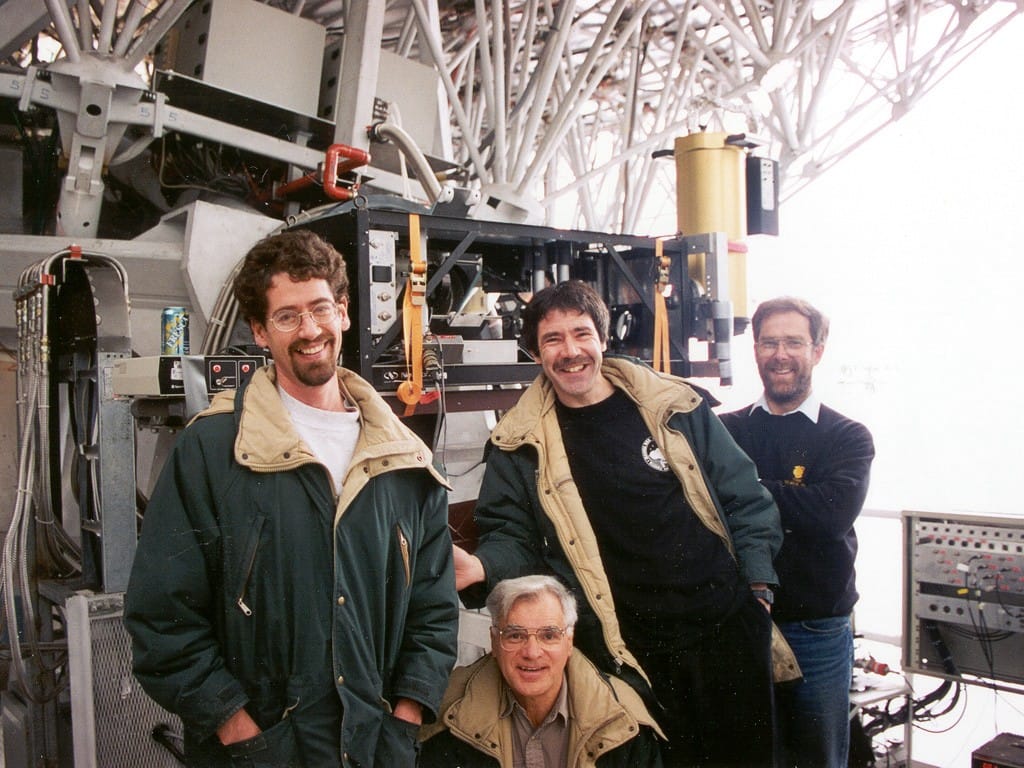
As a Christian, Naylor says he sees God’s fingerprints on his life, as well as in the heavens. He has been guided by the biblical inscription over the doors to the world-renowned Cavendish Laboratory at Cambridge University: “Psalm 111.2 The works of the Lord are great, sought out of all them that have pleasure therein.”
“That’s one of my favourite verses in the Bible,” Naylor says. “I’m one of those people who derive immense pleasure from trying to solve the puzzle that is the universe. Einstein put it in a slightly different way when he said, ‘Subtle is the Lord, but not malicious.’ Science in general and physics in particular are subtle, but they are not malicious. And they are comprehensible, which is perhaps the greater mystery — that we can both dare to try to understand it all and at the same time expect to!”
But is there life on other planets? Naylor doesn’t hesitate to answer the question, but before we get to that answer, a little background is in order.
The desire to figure things out has been with Naylor from the start. He’s the kid who took apart his Christmas toys to see how they worked. And when one of his teachers in grammar school started a physics club, he was in heaven.
His love of solving puzzles may have had something to do with his parents, both of whom played important roles in the Second World War. His mother was involved in encoding and decoding messages to British- and French-Resistance agents. His father, a proud Royal Marine, was a tank commander in the amphibious assault operation codenamed Neptune and one of the first tanks to land on Gold Beach D-Day.
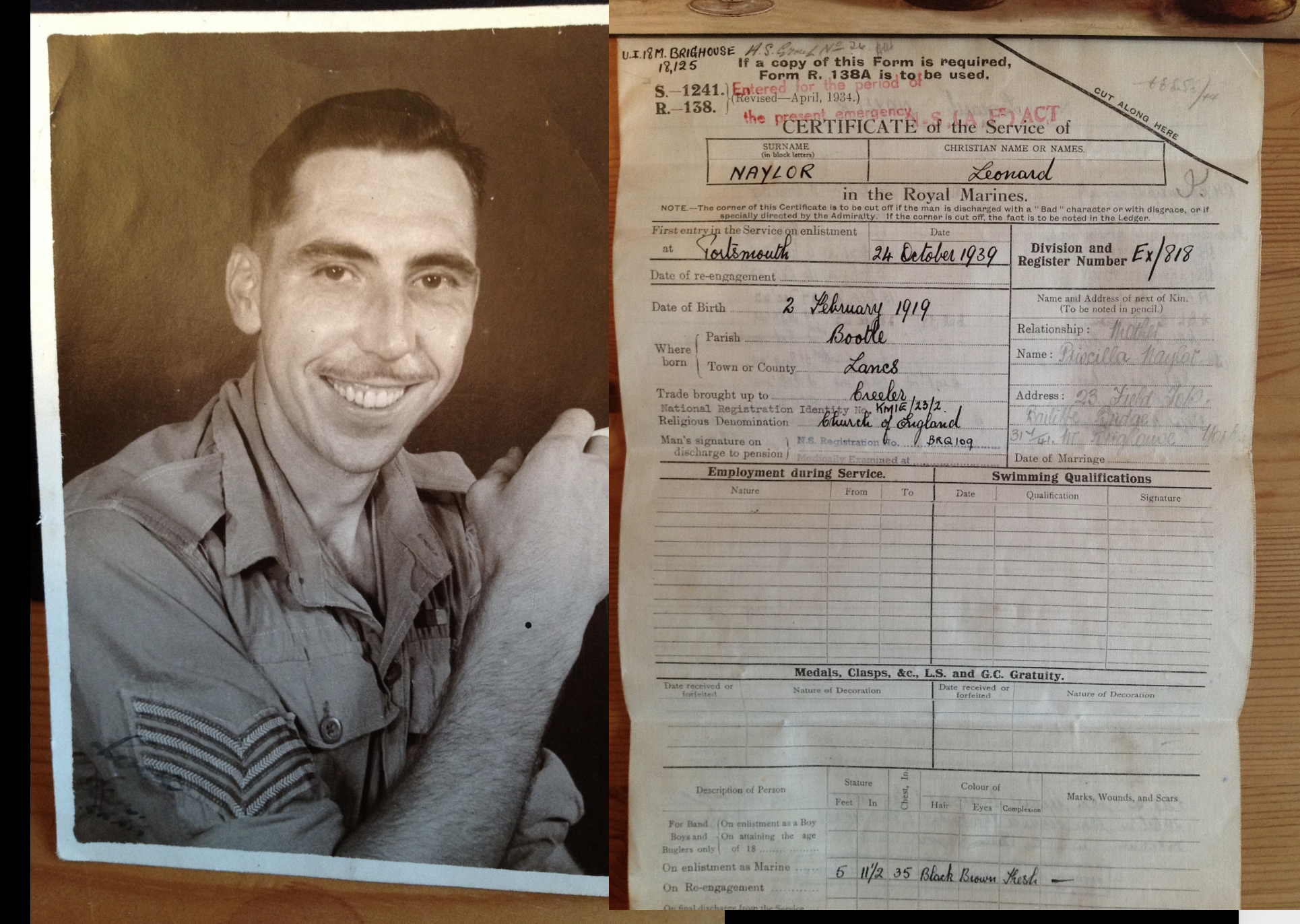
The Early Years
“We have his map, my brother Stuart and I; it is a real treasure,” Naylor says. “At the top it has emblazoned ‘Top Secret, not to be carried in any aircraft’; it shows exactly where Dad’s tank was supposed to go on June 6, 1944. It’s hard not to get emotional when we look at it because he had this with him on the day and it has blood stains on it.”
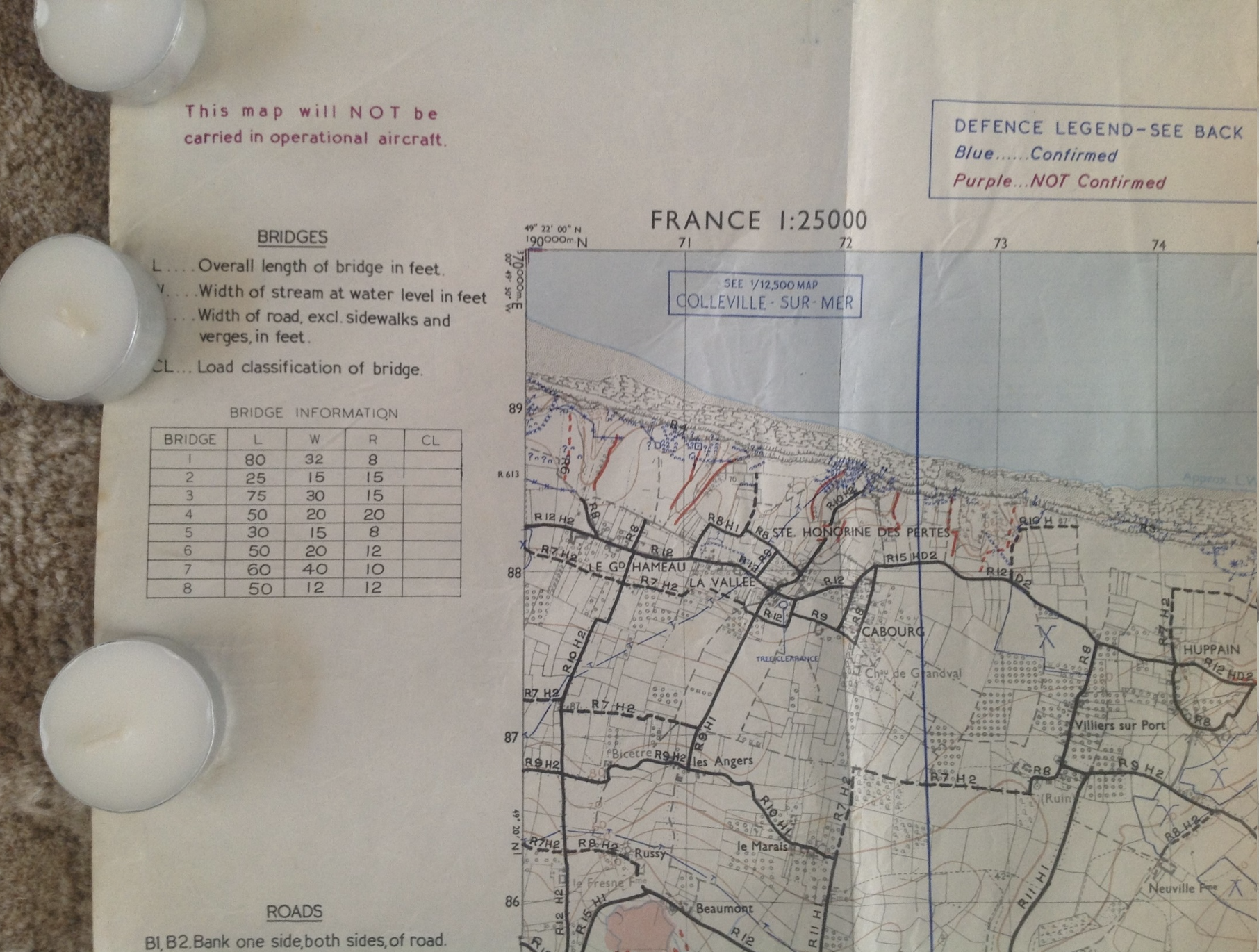

After landing on Gold Beach as part of the amphibious assault and having discharged all of its shells, the tank was abandoned, and Naylor’s father was back in Portsmouth for afternoon tea! His father was also involved in the rescue of Norway’s gold. Hitler and the Germans had their eyes on Norway’s gold to fuel their war machine. In 1940, Germany invaded the country which had been neutral up until then. They’d already seized Austria’s and Czechoslovakia’s gold and seemed poised to take Norway’s as well. Oslo was the target, both as home to the royal family and the headquarters of the Bank of Norway. A Norwegian colonel decided to shell the first German ship and the remaining ships in the flotilla retreated down the fjord to regroup. That gave Norway time to evacuate King Haakon VII. While the country had already taken precautions to move some of its gold reserves, almost 40 tons remained in Oslo. With invasion imminent, Norway began to move the gold out by trucks to ports where British ships had arrived to help, eventually succeeding in getting the gold out of the country. The gold was shipped in instalments to the United States and Canada because of uncertainty about the security of Britain.
“My dad was on the cruiser HMS Enterprise which, together with HMS Glasgow and HMS Galatea, not only carried Norway’s gold, but also King Haakon and Prince Olav,” he says. “While he would usually be expected to dine in the captain’s quarters, King Haakon insisted that he eat with the men who were rescuing Norway’s gold. Dad went on to tell that the cruiser HMS Glasgow dropped off the royal party in a small village down the fjord well out of Hitler’s reach. The king refused to leave his country.”
Naylor was born in Halifax in Yorkshire, England. He grew up in a small village called Bailiff Bridge about three miles from Robin Hood’s grave in nearby Brighouse.
His father, who became a textile weaver after the war, had to leave school at age 14 to look after his mother after his own father died. Even though he didn’t have the opportunity to complete his education, Naylor’s dad knew a bit of astronomy and excelled at mathematics and navigation.
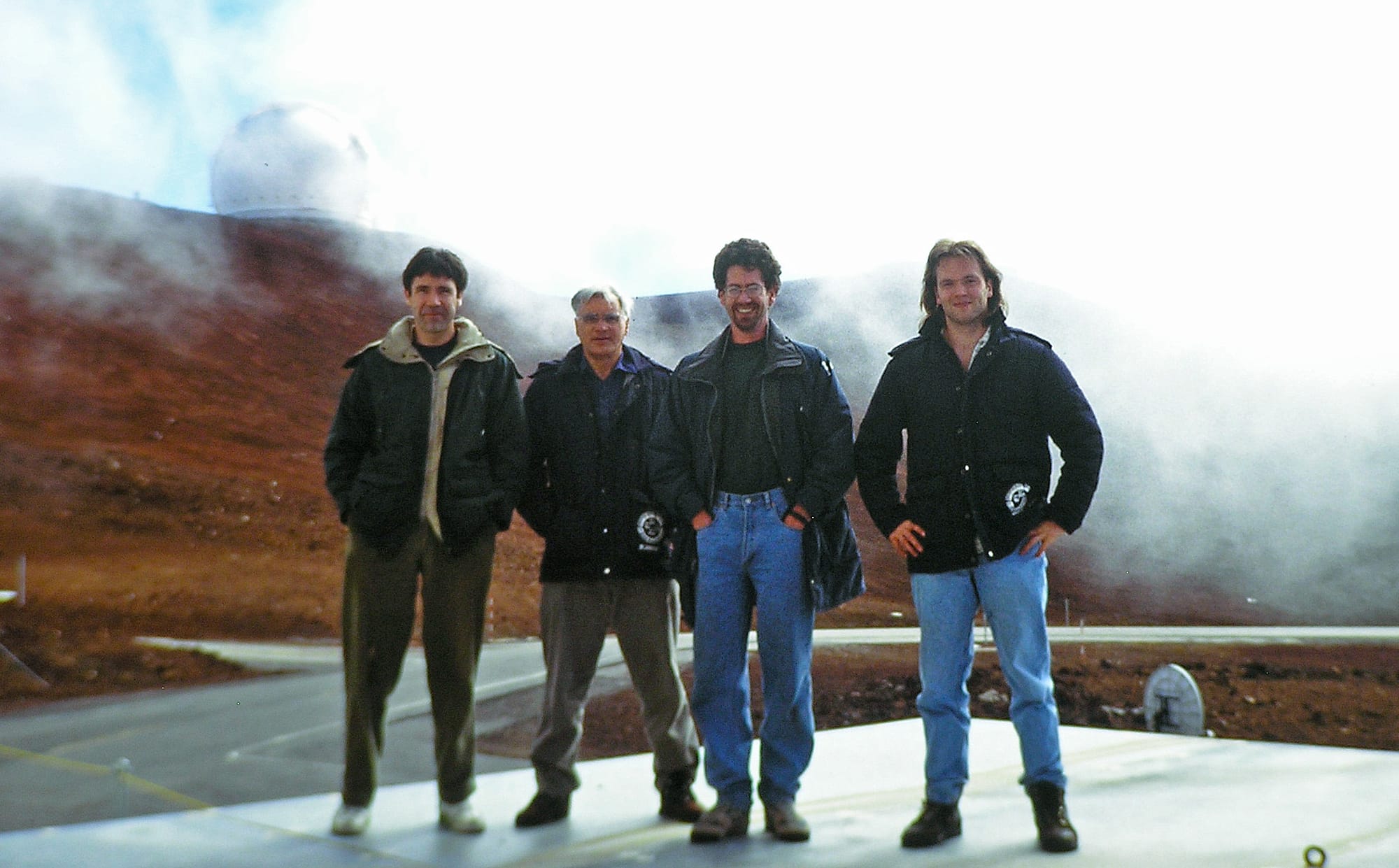
“Why does all this matter?” says Naylor. “It meant my dad didn’t have a chance with his father dying and then the war. So, a lot was expected of Stuart and me. It was a lot of pressure.”
However, Naylor had a bright and curious mind, and he was the first person in his family to go to university. He attended Sussex University where the physics professors were a young group with Nobel laureates among them. Naylor even built a laser as an undergraduate student.
After he completed his undergraduate degree in 1974, he applied for the Commonwealth Scholarship, hoping to land one of 10 scholarships awarded to applicants. Land it he did, but little did he know it would change the trajectory of his life.
Naylor came to the University of Calgary where Dr. Titus Matthews, who’d been a professor at Imperial College London, was chair of the physics department. Naylor plunged straight into PhD studies.
He also met his future wife, Mavis, who was born in Fort Macleod and who was working in the Department of Physics and Astronomy as a data analyst processing images of the aurora obtained from Canada’s ISIS II satellite.
“She’s seen more aurora than any living person!” he says.
Their daughter Jennifer was born while Naylor was still a graduate student.
Hitting his stride
Whilst he was writing up his PhD thesis at UCalgary, the European Space Agency contacted his supervisor, Dr. T.A. Clark, to find out when I would be graduating,” Naylor says. “Alan asked me if I fancied working for ESA and I thought he was pulling my leg. It turned out that ESA was about to test fly an instrument almost identical to the one Naylor had built for his PhD and they needed someone with this unique expertise in spectroscopy (Fourier transform spectrometer (FTS)). Naylor accepted the job offer at ESA with the proviso that he would be given time to finish his thesis after the successful campaign. The family moved to the Netherlands where he worked on the first major infrared satellite — the Infrared Space Observatory (ISO).
While Naylor led the ESA study team and championed using the FTS on the ISO, ESA conducted a detailed risk assessment which showed that the FTS was simply too complex to survive launch and operate in space. Even though ESA couldn’t get behind the FTS Naylor was proposing, he helped the agency get the most out of the spectrometer design that they finally flew and received a commendation from ESA’s Director of Science for this contribution.
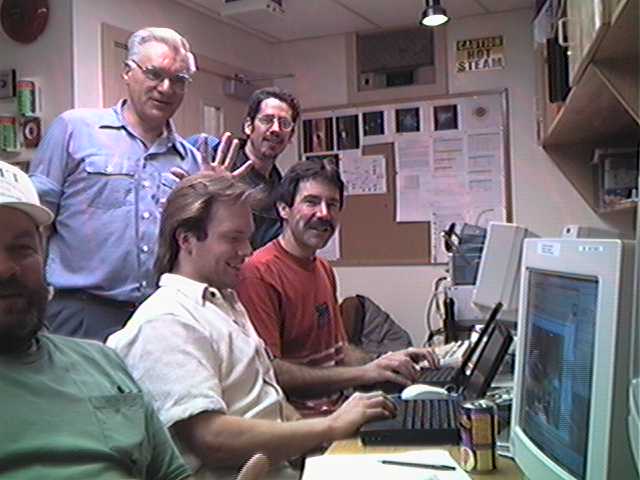
With their daughter approaching school age and the addition of a son, James, who was born in Leiden, the family decided to return to Canada. Naylor’s PhD supervisor told him about a job opening at ULethbridge. He applied and landed a two-year position as an assistant professor, thinking it would be a temporary stop before moving on to a larger institution.
When he came to ULethbridge in 1981, Naylor had no lab space. His colleague, chemist Dr. Loren Hepler (DSc ’89), offered up some of his own lab space, but Naylor had no equipment to fill it. His PhD supervisor arranged for him to get access to the machine shops at the University of Calgary. Then his boss at ESA, Dr. Brian Fitton, gave Naylor the complete instrument he’d been working on that had brought him to the Netherlands in the first place — an instrument valued at $5 million in 1981 dollars. That was a major boost.
“I came back with a bunch of equipment that filled my lab and Loren Hepler turned around and gave me another lab because I needed more space,” he says.
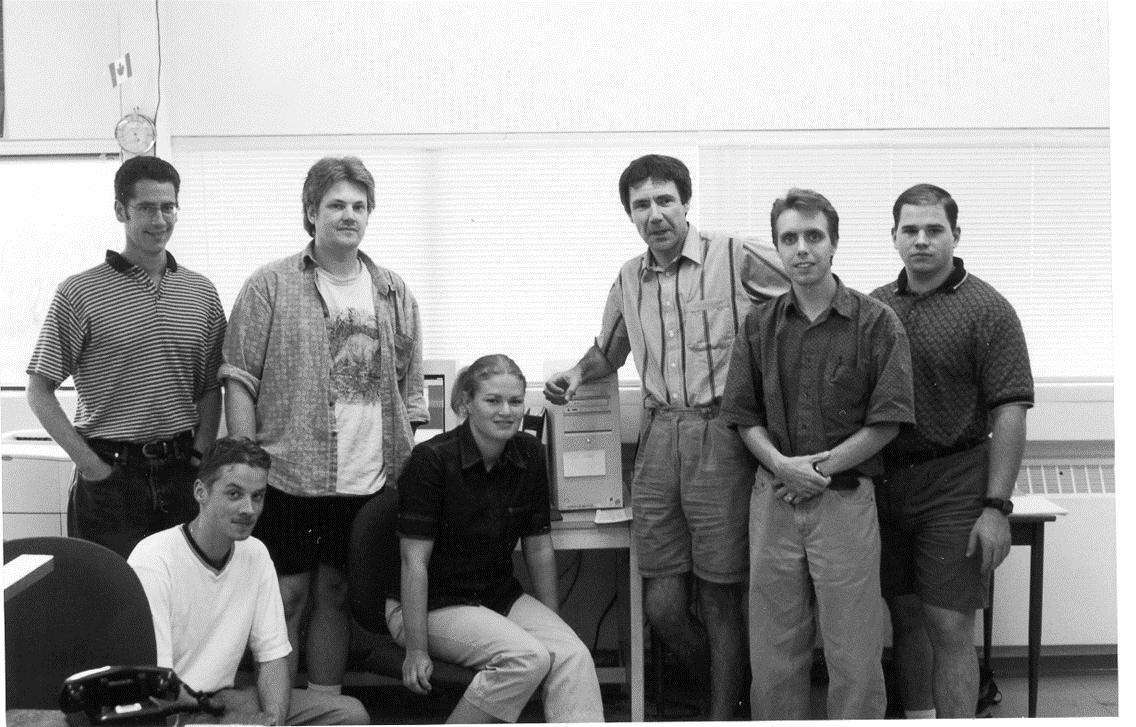
Naylor was the first ULethbridge researcher to be awarded a National Sciences and Engineering Research Council grant in physics, which he held continuously for 42 years. Even though ESA decided not to risk an FTS, he went back to the Netherlands and continued to collaborate with them every summer. ISO turned out not to be as powerful as hoped and ESA eventually came around and realized they needed to fly an FTS and further that they would need someone with FTS expertise. Naylor reached out to the Canadian Space Agency (CSA) to support the project. Given the University was small and relatively unknown, especially in the physics world, CSA only provided funding for three months.
“I think they just wanted to make sure I wasn’t going to totally screw it up,” he says. “It took some convincing, but we did really well, and we’ve been funded by the CSA ever since!”
Persistence pays off
Before launching an instrument into space, it must be tested on the ground. Naylor applied year after year for time on the Canada-France-Hawaii telescope in Hawaii, but his proposals were always rejected.
In 1986, Comet Halley was due to visit, and Naylor wanted to use his FTS to study the comet. He applied for time on NASA’s largest telescope. In January, the Space Shuttle Challenger broke apart shortly after launch, killing all seven crew members aboard. In addition to the tragic loss of life, the suite of instruments on board to study Comet Halley was destroyed. When NASA reviewed Naylor’s proposal, they gave him the maximum time.
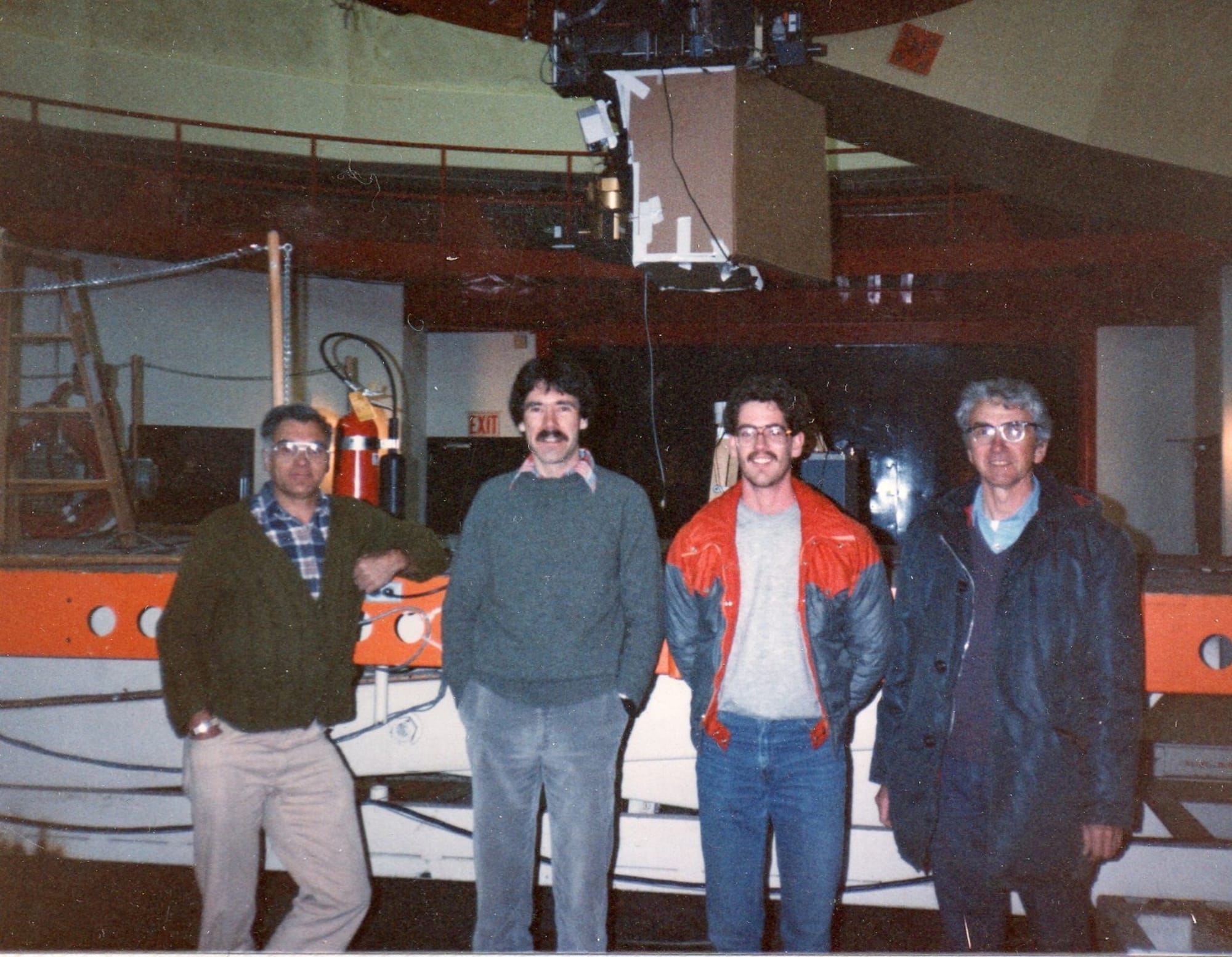
“Ever since then, I never had a problem getting time on the Canadian telescope,” he says.
Meanwhile, Naylor and his team back at ULethbridge kept practising, advancing their instruments and perfecting their methods.
“There are a whole lot of students in this path I should talk about,” Naylor says. “None of this would be possible without Greg Tompkins, my research technician, who sadly passed away in 2016, and all the students who helped on that journey.”
Over the moon
Naylor was awarded a Harvard-Smithsonian Fellowship, which allowed him to work at the National Air and Space Museum (NASM) in Washington, D.C. which houses artifacts from Apollo 11, the first spacecraft to land humans on the moon.
“Few people know that, in the basement of NASM, there’s a leading-edge physics lab,” he says. “I came up with the idea of testing the instrument that ESA shouldn’t have flown. It required a molecular laser and they didn’t have anybody to operate it. I knew how to operate it after building a laser myself when I was in short trousers. It was loads of fun.”
Using the molecular laser, Naylor helped to get the most out of the instrument on board ISO, the flight spare of which is now at the Science Museum in Kensington in London, next to the Apollo 10 command module and Sir Isaac Newton’s telescope.
Naylor’s time at the NASM coincided with the 20th anniversary of the first moon landing and at the celebration, Naylor met astronauts Neil Armstrong, Michael Collins and Buzz Aldrin, and several of then-president Bush’s security detail who followed him around for a week as he was a foreign national.
Launch of Herschel
Next up was Naylor’s work on SPIRE (Spectral and Photometric Imaging Receiver) which was part of ESA’s Herschel Space Observatory. Launched in May 2009, Herschel was designed to look far into the past to glean information about how the universe evolved. With support from the CSA, Naylor and his team made a major contribution to the mission.
“Herschel represented a significant advance over previous missions. Risk is the currency of space and, when you fly an instrument, you must show that you have done everything possible to mitigate all identifiable risks,” says Naylor. “It typically takes about 20 years to go from ‘here’s an interesting idea’ to putting an instrument in space.”
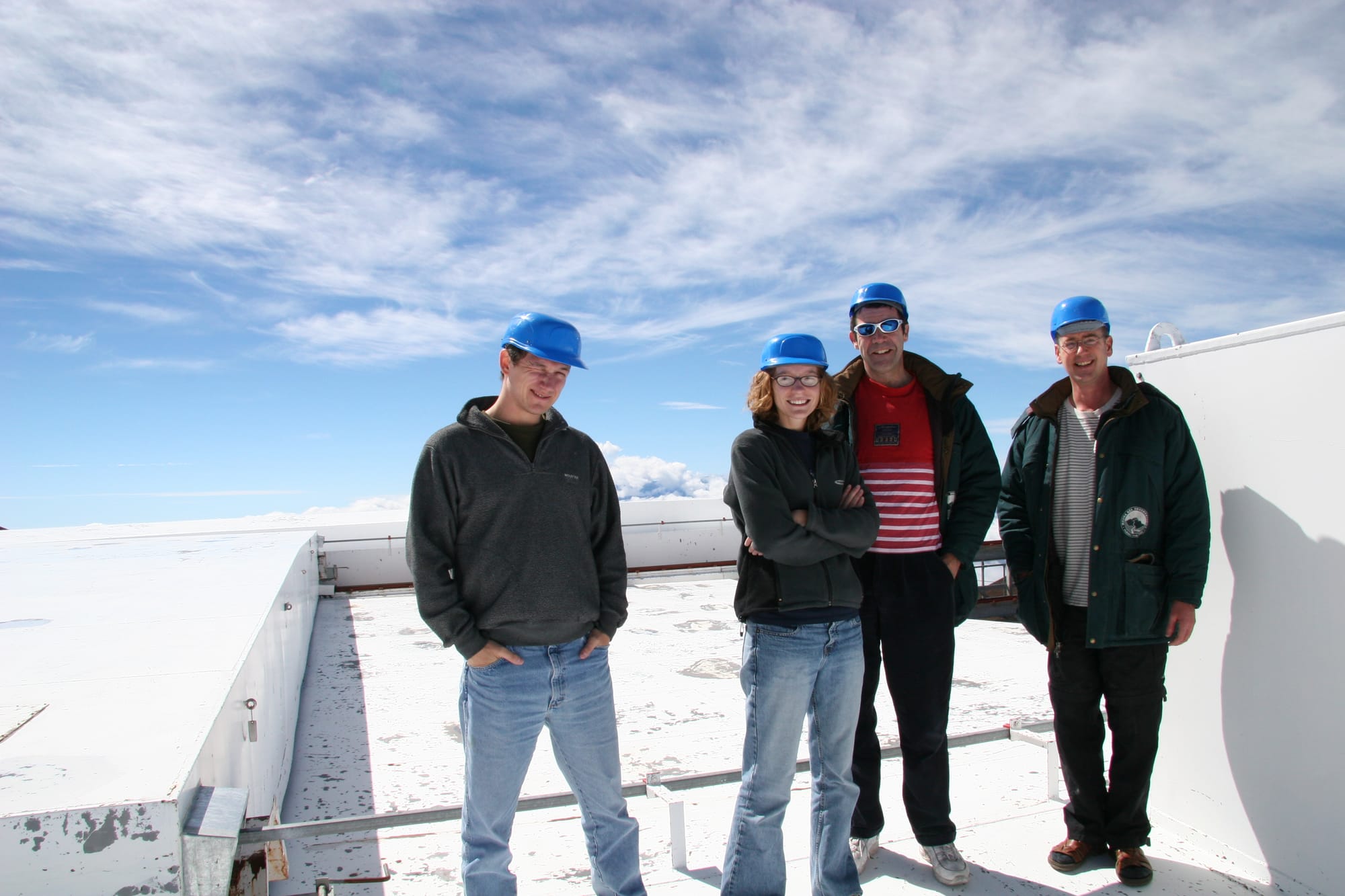
While he and his team were refining and improving the FTS, Naylor spent his study leaves at ESA and University College and Queen Mary College London, working with Professor Peter Ade. One day, Ade told Naylor about an idea he had for a different and novel type of FTS. Naylor saw its genius and they got to work gathering and analyzing data and wrote a paper that was published in 1999.
“Three years later, ESA said ‘We’re flying this’ and that’s what ended up on Herschel,” Naylor says. “This remains the most successful far-infrared space exploration project ESA has ever launched and it established ESA as the world leader in far infrared space astronomy.”
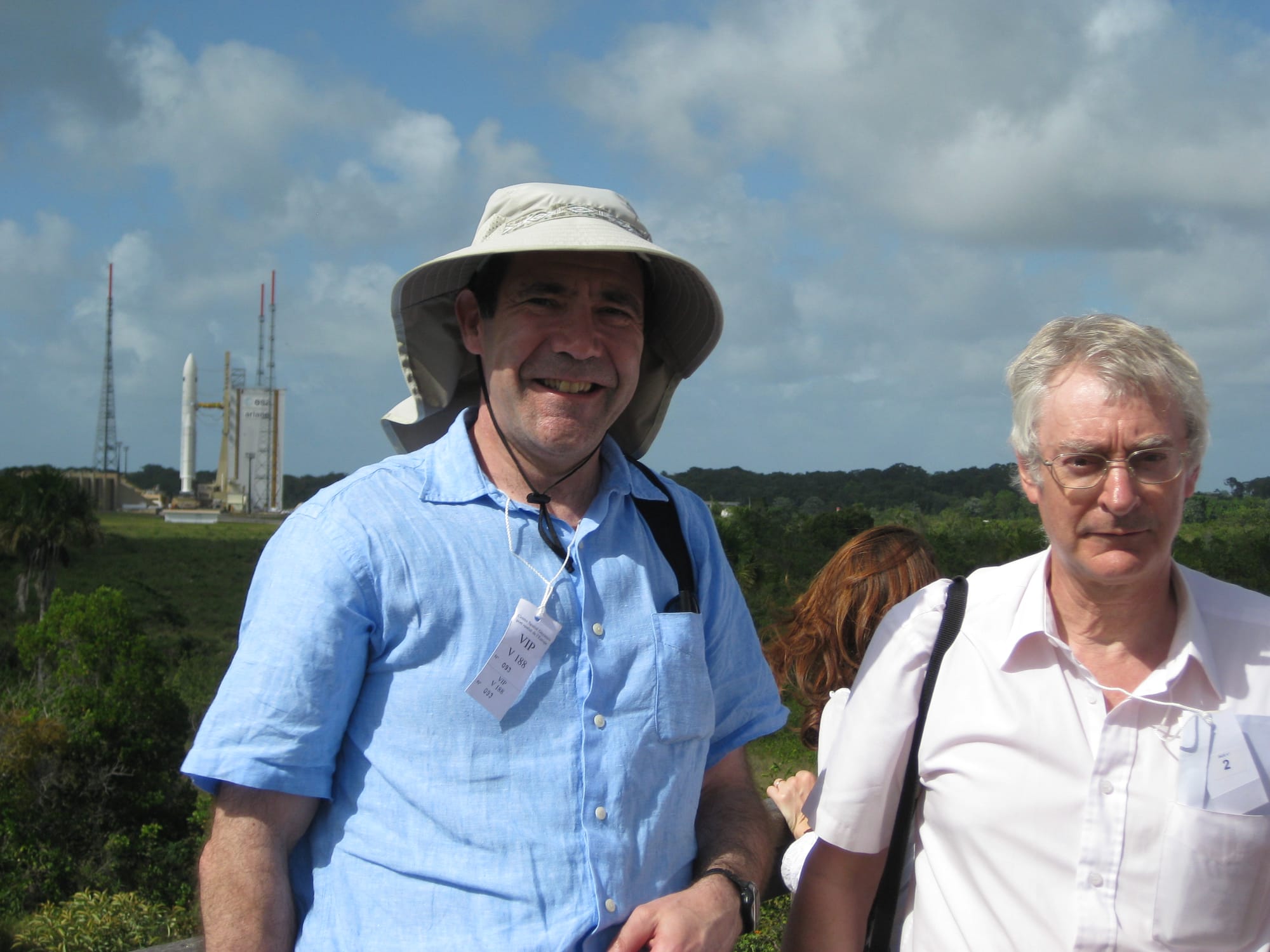
Naylor was on site in French Guiana for Herschel’s launch. But to show how success breeds success, at breakfast on the day before the launch of Herschel, Naylor was invited to join a meeting of ESA scientists to decide the instrument payload for the successor to Herschel, which ultimately led to Canada being charged with building the FTS for the proposed SPICA mission. Unfortunately, ESA did not select SPICA, but recognizing the capability gap, NASA has now proposed the PRIMA mission, which is very similar to SPICA and has decided to fly the FTS that Naylor and his team have been developing for the last decade. The PRIMA proposal was submitted on Nov. 16, 2023, and is currently under review with a project launch date of 2032.
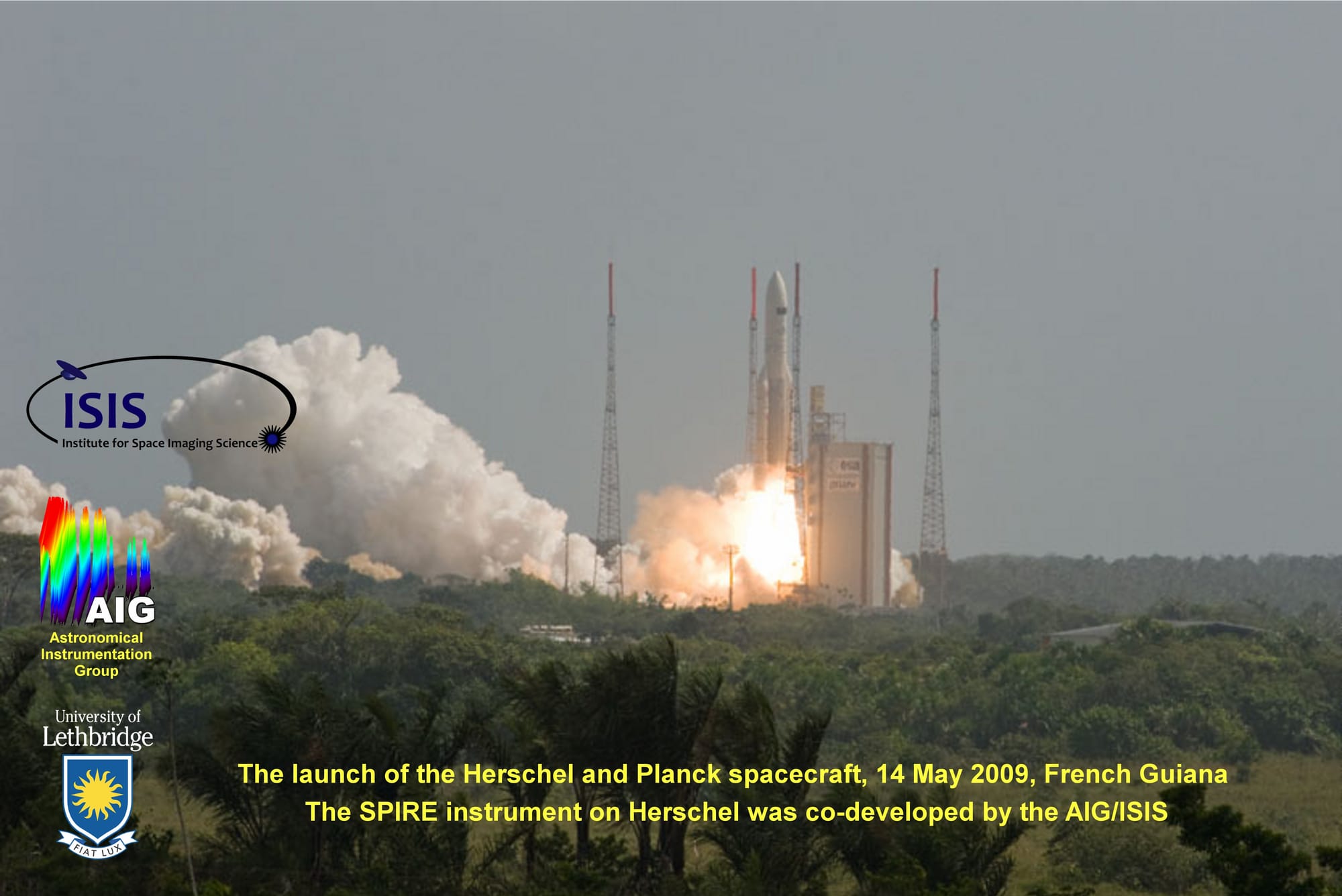
“Brian (Fitton) told me on pretty much my first day at ESA that a space project is 20 years long,” he says. “If you’re lucky, you’ll have two in your career. I’ve had three. I got the tail end of ISO, all of Herschel and the beginning of SPICA, which is now the beginning of PRIMA. Much like any teacher, my job is to train the next generation, to pass on the baton and not to drop it.”
Looking ahead
“I have so many irons in the fire,” Naylor says. “I have service commitments on a University of Toronto advisory committee through 2024 and was recently appointed general chair of the Optical Society’s FTS conference in 2025, all of which bring good report to ULethbridge, so I’m hoping I can keep my office as an emeritus professor.”
If NASA selects the FTS instrument Naylor has helped develop with support from the CSA, it’ll be off to the races. The NASA PRIMA principal investigator has given ULethbridge the first right of refusal to lead Canadian participation in the mission if it is selected. But other Canadian universities are watching closely and ready to take the lead. Fortunately, colleagues Locke (Spencer (MSc ’05, PhD ’09)) and Alex (Tetarenko) in the Department of Physics and Astronomy are familiar with PRIMA and, assuming that Naylor’s position is replaced, the legacy he leaves behind will ensure that the University remains a partner of choice on international space exploration missions for years to come.
Is there life on other planets?
“I often get asked this,” he says. “A byproduct of designing instruments to see to the farthest reaches in space is that we know precisely the best wavelengths to communicate over long distances. We know the technology we need, and we have much of it. The SETI (Search for Extraterrestrial Intelligence) Institute was formed almost 40 years ago to try to detect signs of intelligent life without success.”
Regarding UFOs, Naylor has been on the other side of the discussion, launching high-altitude balloons and spacecraft from remote locations and getting bombarded with calls from local TV and radio whose listeners report seeing UFOs.
“They are of course correct, they are unidentified to the individual, but not to the scientists involved in the project,” Naylor says. “There is also the statistical problem that most sightings are reported from people in remote locations in Saskatchewan or Manitoba when one might consider intelligent life would know that 1600 Pennsylvania Avenue would be a better first point of contact — or then again not. And of course, if one is going to spend billions on a stealth aircraft, one has a vested interest in denying its very existence.
“I have a colleague at NASA’s Goddard Space Flight Center who has an interesting take on this. He says if we were to detect Freon (a man-made chemical which went a good way to destroying our ozone layer) in the atmosphere of another planet, it would show signs of intelligent life.
"The Drake equation is used to estimate the number of active, communicative extraterrestrial civilizations in our galaxy. I sometimes ask my students to work in groups to solve the Drake equation, justifying their choices for its various terms,” he says. “They are often shocked by the range of answers provided by the class and the small values that some of the groups return. To date, we have searched only a tiny volume of our galaxy, but we are asking the right questions. We live on an insignificant planet, orbiting an insignificant G2V-class star in a major-league galaxy. Not that many years ago, we wouldn’t have wasted time looking at a G-class star, but now we’ve come to realize that these (and more) insignificant stars might be our best candidates. Each has his/her own opinion on the matter, but mine is that the galaxy is not teeming with intelligent life."
While space travel, alien civilizations and shows like Star Trek capture the imagination of Earthlings, Naylor, through his instruments, has boldly gone where no one has gone before without ever leaving his home planet.